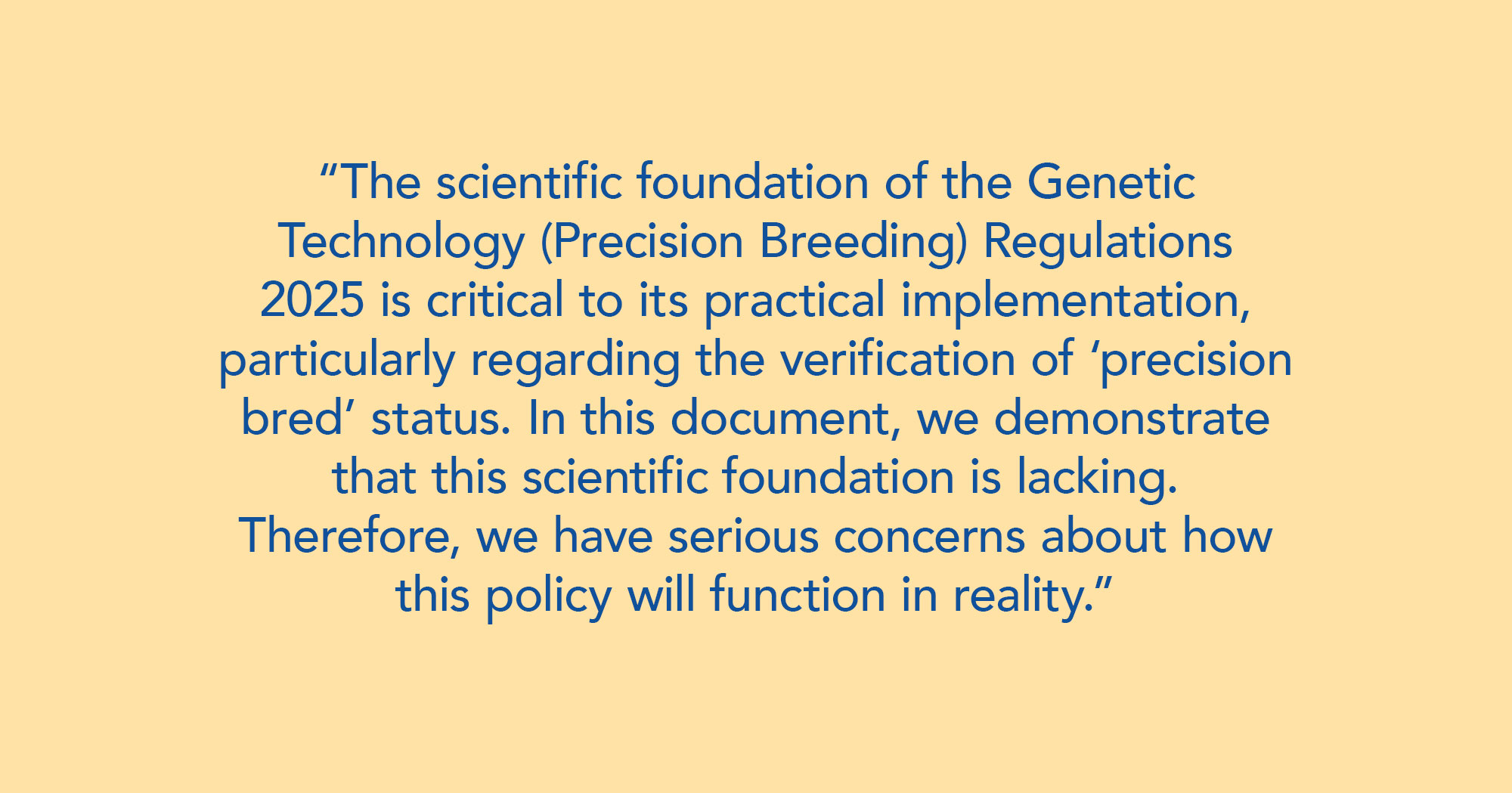
Scientific foundation of "precision bred" status is lacking
On 25 February the UK government published the draft statutory instrument (SI) for the Genetic Technology (Precision Breeding) Regulations 2025, along with an Explanatory Memorandum (EM) for the same. The SI, when finalised, will act as the "secondary" implementing legislation for the Genetic Technology (Precision Breeding) Regulations 2025, which will remove regulatory safeguards from a subclass of GMOs in England.
GMWatch's Claire Robinson and molecular geneticist Prof Michael Antoniou have submitted comments on the SI and the EM to the Secondary Legislation Scrutiny Committee, which examines the policy effects of secondary legislation.
In their comments, Robinson and Antoniou write that the scientific foundation of the Genetic Technology (Precision Breeding) Regulations 2025 is critical to its practical implementation, particularly regarding the verification of “precision bred” status. However, they show that this scientific foundation is lacking: "Therefore, we have serious concerns about how this policy will function in reality."
They explain that the draft SI currently lacks mandatory analytical processes, namely long-read deep whole genome sequencing and untargeted “omics” analyses, that would help to establish whether any given GMO qualifies as precision bred. Without the mandatory application of these scientific methods, the system relies heavily on self-declaration by applicants, creating significant regulatory uncertainty about whether genetic changes in supposedly precision bred organisms truly “could arise from traditional processes”, as required by the legislation.
Robinson and Antoniou write that these scientific gaps have far-reaching implications across multiple sectors. The absence of mandatory detection methods prevents conventional and organic breeders from verifying and maintaining their non-GMO status, while also leaving them vulnerable to potential patent infringement claims.
Meanwhile, the regulatory framework’s assertion that precision bred organisms present “no greater risk to health or the environment than traditionally bred counterparts” lacks robust empirical evidence, contradicting scientific perspectives that emphasise the need for rigorous case-by-case analysis. These scientific considerations ultimately determine whether the regulations can achieve their intended balance between innovation and safety, transparency and practicality.
The document includes proposals for questions and suggestions that the committee might wish to put to the UK government and farm ministry DEFRA in order to improve the rigour and clarity of the secondary legislation.










